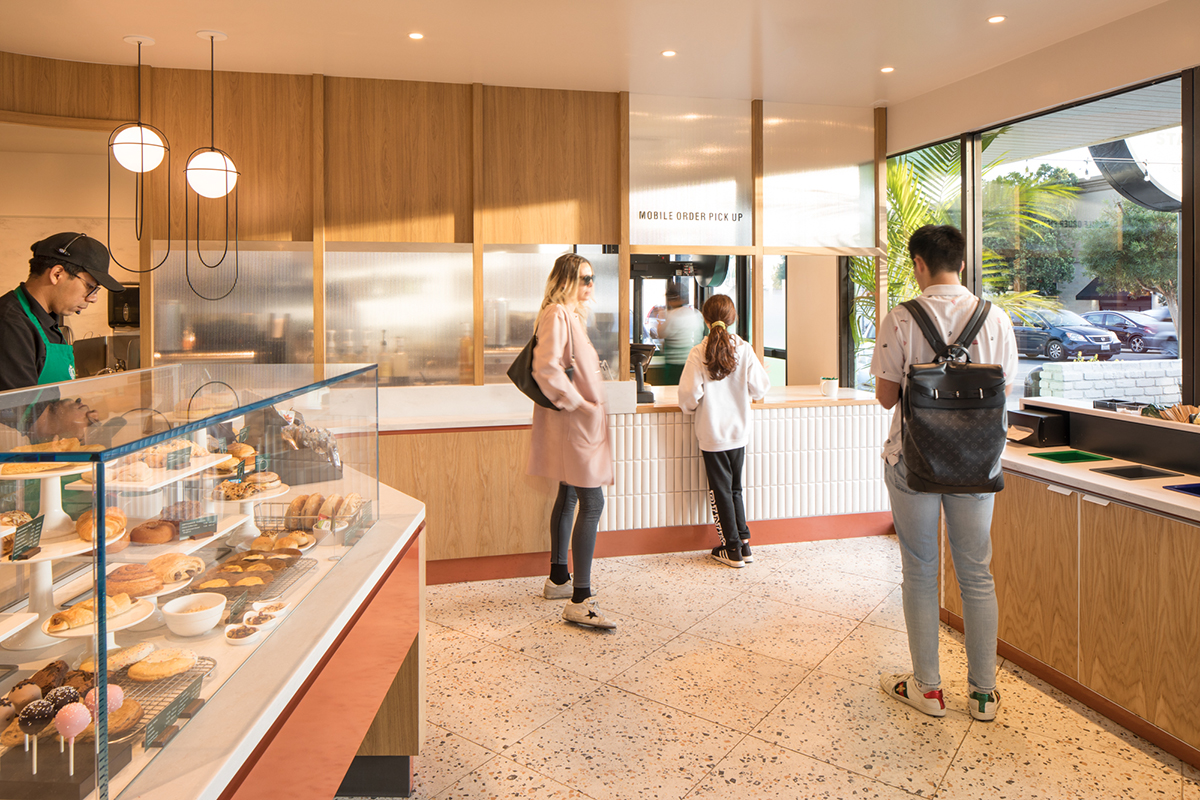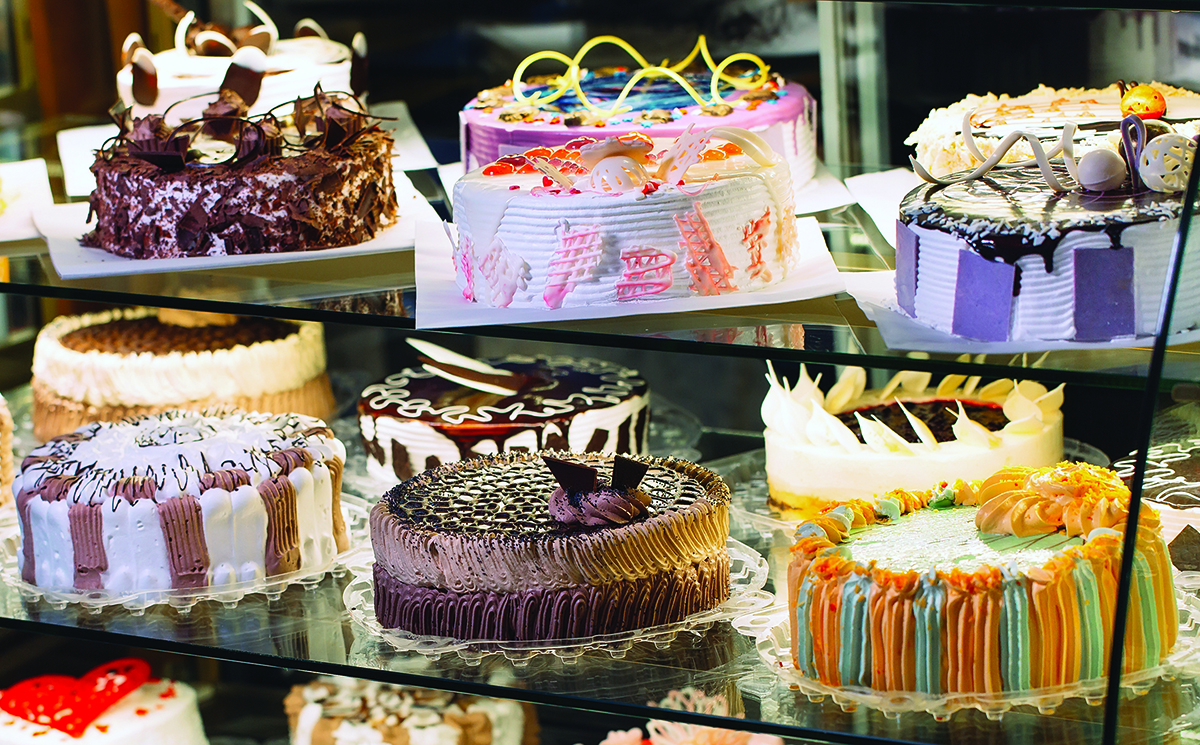As food safety issues evolve into a lasting impact of the COVID-19 pandemic, the question looms over how bakery shoppers will behave in the future. Are current store layouts and merchandising programs acceptable, or will shoppers balk at the idea of any future close interactions? Are we heading for a scenario in which social distancing becomes the everyday norm?
“Now the interesting thing is there is a paranoia from consumers about not wanting to be near store employees, and now employees don’t want to be near consumers,” says Sam Zietz, chief executive officer of Grubbrr, a technology company dedicated to providing businesses with the perfect ecosystem of products to maximize operational efficiency and ensure customer satisfaction.
Changing business models that were on pace to emerge over two to 10 years are “now right in front of everybody’s face,” he adds.
What this means is that profound changes are ahead in the business of selling cakes and other fresh bakery products to shoppers.
Kiosks are one key solution, Zietz says, and one that works especially well for decorated cakes. Why? Consumers can head over to the instore kiosk and place their cake order with a few clicks, return to shopping for other products in the store, and then return when their cake is ready.
“We have done cake builders for the bakery department, and when consumers come back their cake is boxed up and ready to go,” he says. “It is a much better customer experience because they are getting exactly what they want. And you end up with a higher average ticket.”
This scenario not only applies to a supermarket bakery, but a retail bakery, as well. For retail bakers, it is simply a matter of rethinking the customer experience from their vantage point, not yours. Then it becomes a customer-centric experience.
Retail bakeries are gradually embracing the notion that shoppers want something personalized, but they do not want to spend a lot of time waiting. Some customers may prefer to preorder decorated cakes online, but that scenario does not account for the many shoppers who prefer to go into the store and still want a personalized experience.
“At the kiosk, you are looking at realistic photos and clear descriptions,” Zietz explains.
Future implications

“It is a much better customer experience because they are getting exactly what they want. And you end up with a higher average ticket.” - Sam Zietz, chief executive officer of Grubbrr
Industry leaders like Starbucks and Panera Bread are responding to new realities to ensure customers are safe and satisfied with their service. In its continued effort in prioritizing the health and well-being of employees and customers, Starbucks announced that beginning on July 15, it will require customers to wear facial coverings while visiting all company-owned café locations in the US.
At select locations where a local government mandate is not in place, customers that may not be wearing a facial covering will have various options to order from Starbucks, including ordering at the drive-thru, curbside pickup through the Starbucks app or placing an order for delivery through Starbucks Delivers.
Consumers have historically turned to sweet snack foods for comfort and enjoyment during challenging times, like the Great Recession, but this behavior has been heightened during the COVID-19 pandemic, according to The NPD Group.
Given both the economic and well-being stressors related to COVID-19, indulgent snacking is playing an even more important role during these current challenging times. Snack food consumption has increased by 8% during the pandemic as consumers seek comfort through sweet and savory snacks, according to NPD’s Snack Food Behaviors in Challenging Times study.
During the Great Recession, between 2008 and 2010, snack foods increased by 4.8 billion eatings, a 1% increase.
In April, during the height of the shelter-at-home orders, 37% of consumers told NPD they wanted to make sure they had sufficient snack foods on hand. In many cases, the more snack food packages in the home, the more frequently the item is consumed, which tends to be especially true of certain types of snack foods.
“We’ve seen consumers turn to indulgent snack foods in other challenging times, and although history isn’t repeating itself during COVID, it is rhyming,” says Darren Seifer, NPD food and beverage industry analyst. “Although we can’t predict what’s going to happen in the future, I think it’s safe to say snack food manufacturers and retailers can expect elevated snack food usage while COVID-19 restricts our restaurant usage and overall movement, in particular school closings and work from home orders.”
Cake trends

“We’ve seen consumers turn to indulgent snack foods in other challenging times, and although history isn’t repeating itself during COVID, it is rhyming.” - Darren Seifer, NPD food and beverage industry analyst
As for trends specific to cakes, experts predict that smaller cakes and less elaborate designs are expected to gain popularity in the near future. The cake sector took an immediate, double-digit sales hit during the early months of the COVID-19 pandemic, but then began to show signs of recovery.
Zietz of Grubbrr predicts that kiosks and mobile ordering will become widespread practices in the near future. He sees the need for an omnichannel approach to the situation in which there is expanded room for new technologies to be incorporated into the marketplace.
“We are going to see a significant increase in food lockers. Now I can place an order online, and lockers can be refrigerated,” Zietz says.
It remains to be seen how the cake segment will work in this future, but standard designed cakes will certainly be stored in lockers in the future, retailers predict.
“The technology is out there. Now it is how quickly can we roll this out,” Zietz says. “This type of technology is not that expensive, and it’s also important to note that kiosks have the ability to accept cash and credit cards. With smaller independents who are more reactive, this is moving very quickly.”
Consumer research supports his views. Mintel recently released new research analyzing the current economic environment compared to that of the Great Recession, including insight on the economic indicators that will play a role in predicting consumer spending in the months and years ahead. While the economy is in decline, the factors leading to the last recession, its duration, and lasting impact on consumers are (and will be) very different this time around.
The Great Recession was largely impacted by failures in the housing and banking industries. Today, the crisis is out of human control. What’s more, the financial system today is fundamentally sound, Americans are hyper-aware of economic repercussions and, due to the pandemic’s impact on lifestyles and skyrocketing jobless claims, consumers have adopted more conservative habits.
“As the economic implications of COVID-19 unfold, Americans are simultaneously dealing with not only immediate concerns around physical health and lifestyle changes but also longer-term concerns about their financial health,” says Fiona O’Donnell, director, Mintel Reports US. “Expect to see consumers evaluate their lifestyles and reduce discretionary spending. With economic recovery contingent on COVID-19 containment, consumer confidence will lag, followed by a sharp contraction later this year.”
Mintel research spanning the 2007-09 recession and the years beyond, suggests there are four economic indicators that play an especially important role in predicting consumer spending patterns: unemployment, confidence, income, and savings rates.
Few factors are as influential on consumer optimism as the unemployment rate. Consumers often reduce spending when the rate increases due to concerns about their own job prospects as well as those of loved ones. Consumer sentiment is important to watch because as confidence drops, spending contracts.
“Fewer Americans working means less spending and a focus on the necessities,” O’Donnell says. “This downturn promises to alter consumer priorities beyond the recovery period. Perceptions of value will change, and consumers will question whether premium-priced products are worth the additional cost.”




